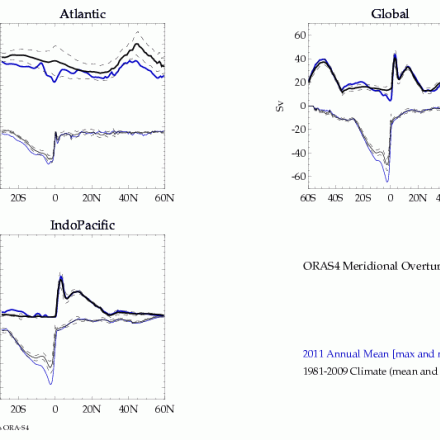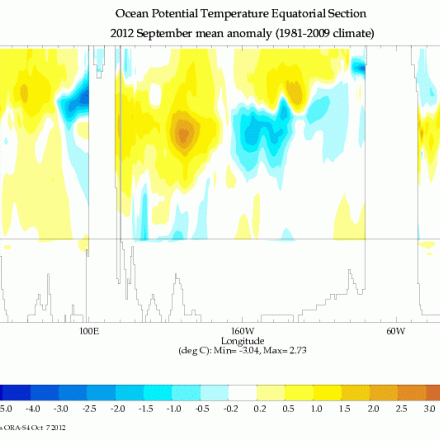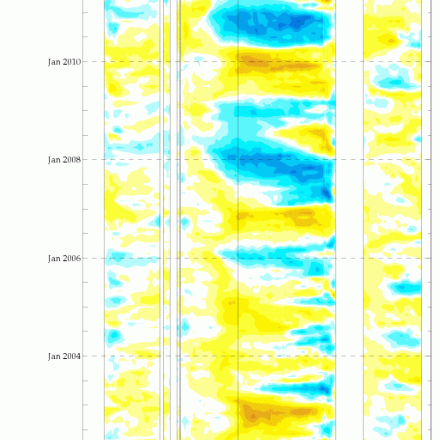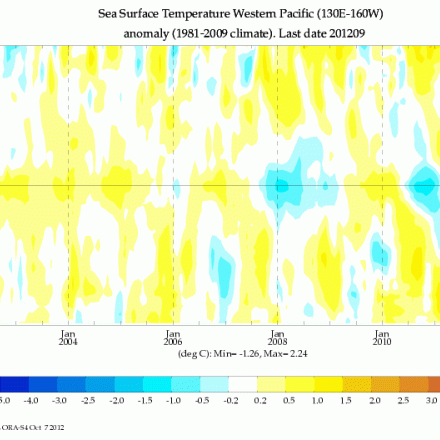ORAS4: ECMWF Ocean Reanalysis and derived ocean heat content
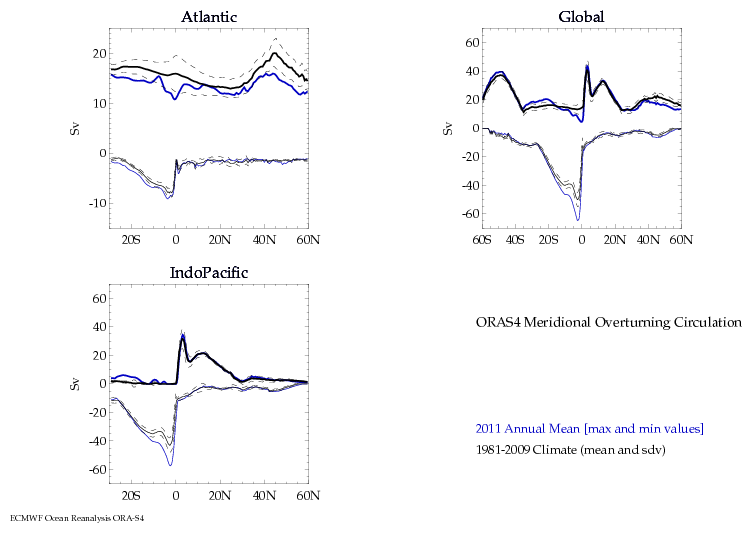
ECMWF's current ocean reanalysis uses a sophisticated data assimilation methodology which includes a model bias correction. The ocean model used is forced by atmospheric daily surface fluxes, relaxed to SST and bias corrected.
The Balmaseda et al (QJRMS 2013) reference provides excellent peer reviewed documentation and evaluation.
Key Strengths
Improved high quality data assimilation method and model
Improved surface forcing and quality control in-situ observations (XBT corrected, Argo blacklists...)
Retrospective use of Argo information via bias correction
Key Limitations
First 2 decades should be used with caution (large uncertainties)
Atlantic Meridional Circulation (AMOC) at 26N is underestimated
Large surface salinity errors
Expert Developer Guidance
(a) Some visible events still non-validated, (e.i.: trends Mediterranean outflow waters). (b) Possibility of spurious signals.
11/16/12 3:05 AM, Magdalena Balmaseda (ECMWF)
Cite this page
Acknowledgement of any material taken from or knowledge gained from this page is appreciated:
National Center for Atmospheric Research Staff (Eds). Last modified "The Climate Data Guide: ORAS4: ECMWF Ocean Reanalysis and derived ocean heat content.” Retrieved from https://climatedataguide.ucar.edu/climate-data/oras4-ecmwf-ocean-reanalysis-and-derived-ocean-heat-content on 2025-12-16.
Citation of datasets is separate and should be done according to the data providers' instructions. If known to us, data citation instructions are given in the Data Access section, above.
Acknowledgement of the Climate Data Guide project is also appreciated:
Schneider, D. P., C. Deser, J. Fasullo, and K. E. Trenberth, 2013: Climate Data Guide Spurs Discovery and Understanding. Eos Trans. AGU, 94, 121–122, https://doi.org/10.1002/2013eo130001
Key Figures
Other Information
- Balmaseda, M. A., Mogensen, K. and Weaver, A. T. (2013), Evaluation of the ECMWF ocean reanalysis system ORAS4. Q.J.R. Meteorol. Soc., 139: 1132–1161. doi: 10.1002/qj.2063
- Balmaseda, M. A., K. E. Trenberth, and E. Källén (2013), Distinctive climate signals in reanalysis of global ocean heat content, Geophys. Res. Lett., 40, 1754–1759, doi:10.1002/grl.50382.
- Balmaseda, M.A. et al (2008): The ECMWF Ocean Analysis System: ORA-S3
